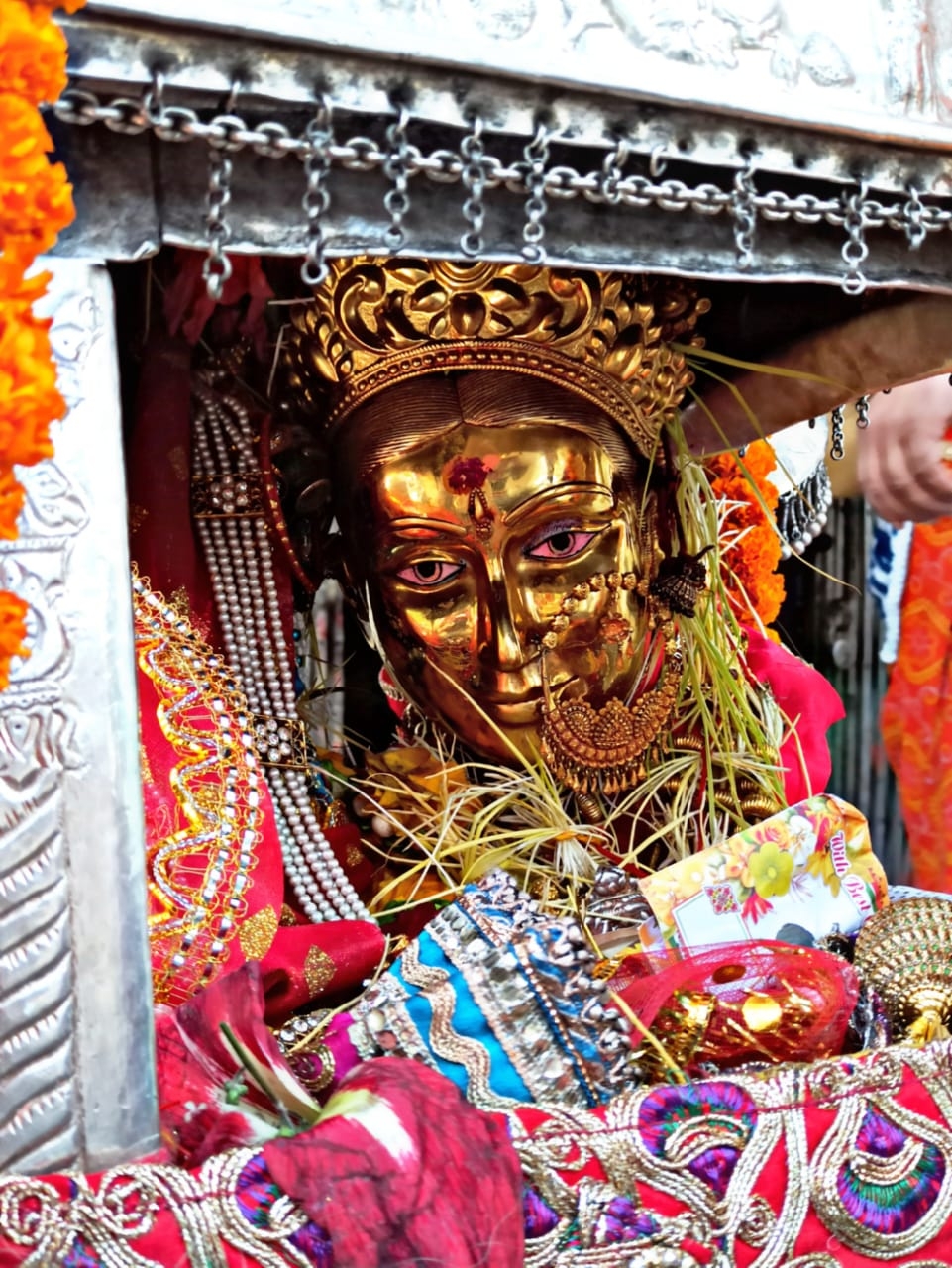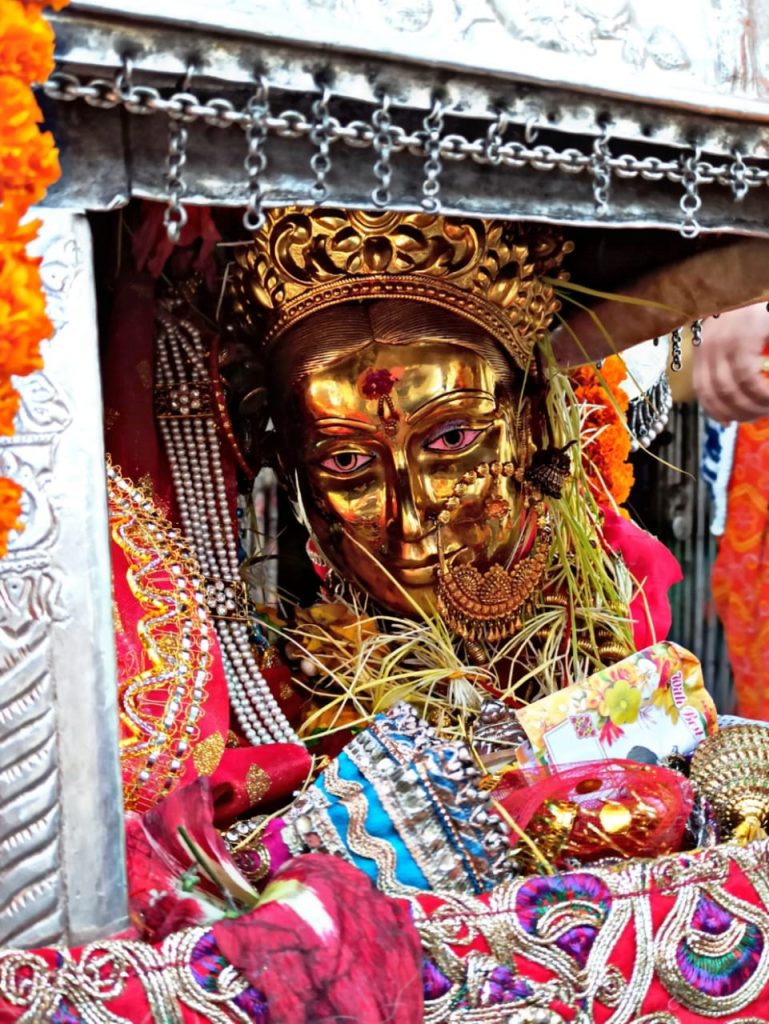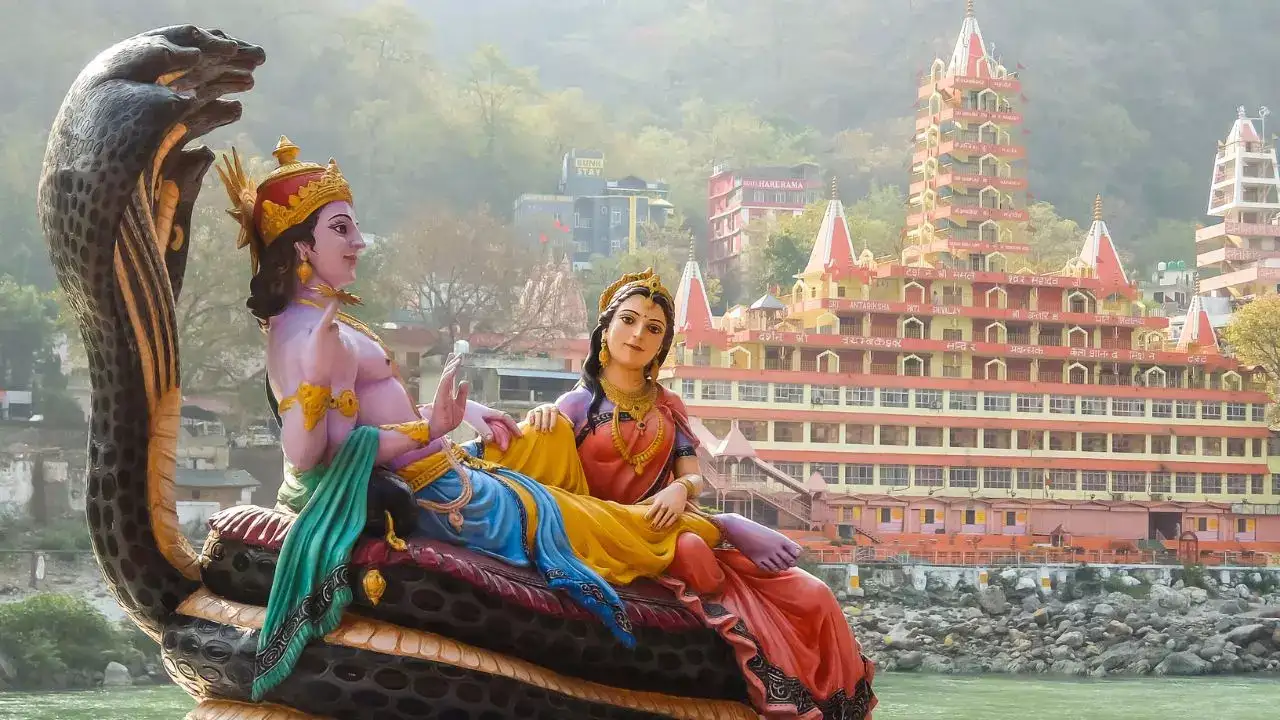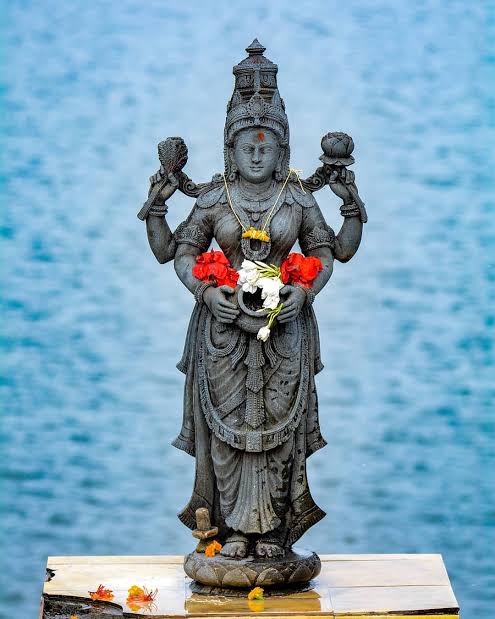Ganga Dussehra, also called Gangavataran, marks the divine descent of Goddess Ganga to earth. Celebrated on Jyeshtha Shukla Dashami, this ten-day festival symbolizes purification of the soul and absolution of sins through her divine waters.
Ganga Dussehra
Ganga Dussehra is celebrated over ten days, culminating on the Dashami (10th day) of the waxing moon in the month of Jyeshtha. This usually falls in May or June as per the Gregorian calendar. The word Dussehra comes from Sanskrit where “dasha” means ten and “hara” means to destroy. Hence, it’s believed that ten types of sins are cleansed by Maa Ganga on this sacred day.
The festival is observed primarily in Uttarakhand, Uttar Pradesh, Bihar, and West Bengal-regions where the Ganga flows. Devotees gather at riverbanks like Haridwar, Rishikesh, Varanasi, Prayagraj, and Patna to take a dip in the holy river, perform aarti, and offer deep daan (floating lamps).
In Sanskrit scriptures:
“एतानि दशपापानि हर त्वं मम जाह्नवि ।
दशपापहरा यस्मात् तस्माद्दशहरा स्मृता ॥”
“O Jahnavi (Ganga), take away these ten sins of mine. Because you remove ten sins, you are remembered as Dashahara.”
Deities Associated :
Ganga Devi – The celestial river goddess, purifier of sins.
Lord Shiva – Who captured Ganga in his jata (locks) to temper her descent.
Rishi Bhagirath – Whose tapasya brought Ganga to Earth
Vishnu – Since Ganga originates from his feet (Vishnupad), she is also called Vishnupadi.
Varuna Deva – As per scriptures, Ganga is the dharma-patni (sacred consort) of Varuna.
Wherever Ganga flows, the beloved of all Gods resides.
Origin of Ganga Dussehra :
The story begins with Rishi Bhagirath, whose ancestors had been cursed and turned to ashes. To liberate them, he performed intense penance to invoke Ganga to descend and purify their souls. Ganga agreed, but her forceful descent could destroy Earth. So, Lord Shiva caught her in his matted locks and released her as gentle streams.
Thus, Ganga’s descent was both cosmic and compassionate – a convergence of tapasya, divinity, and dharma. Since then, Ganga is also called Bhagirathi, in honor of Bhagirath.
Significance of Celebrating Ganga Dussehra:
Ganga Dussehra holds immense spiritual and cultural significance as it commemorates the divine descent of Goddess Ganga to Earth. This sacred event represents the triumph of purity over sin and symbolizes liberation for both the living and the departed. Bathing in the Ganga on this day is believed to cleanse the soul of ten kinds of sins accumulated over lifetimes. The celebration encourages environmental respect, spiritual awakening, and acts of charity like food donations and service to the needy. It reinforces the bond between humans and rivers, reminding devotees that nature is not just a resource but a manifestation of divinity.
Astrological Significance of Ganga Dussehra:
Ganga Dussehra falls on the auspicious Dashami Tithi (10th lunar day) of the Shukla Paksha in the month of Jyeshtha, often coinciding with the beneficial Hasta Nakshatra and powerful Vyatipata Yoga : a rare and spiritually potent planetary alignment. This combination is highly favorable for rituals related to cleansing, karma dissolution, and spiritual elevation. It is believed that planetary influences on this day amplify the purifying power of water and enhance the results of daan (charity), snan (bath), and japa (chanting). Performing river-related rituals today also helps in pacifying malefic effects of planets like Rahu, Ketu, and Saturn, bringing peace, stability, and progress in life.
Customs, Traditions, and Rituals:
Holy Ganga Snan (Bath) at sunrise, especially in Haridwar, Prayagraj, Rishikesh, Varanasi, or using Ganga Jal at home.
Deep daan (lamp offering) in the river at dusk.
Aarti of Maa Ganga with chants like “Om Namo Gangaayai Namah” or Ganga Stotra.
Devotees observe vrat (fast) and perform Ganga stotra path, especially from Skanda Purana.
Charity and Annadanam (food donation) to Brahmins and the poor.
Releasing banana stems with diyas, symbolizing letting go of ego and sins.
Seven Ways to Worship Ganga:
Remembering Her name – chanting “Ganga”
Darshan of the river
Touching Ganga Jal
Offering Puja
Bathing in Ganga
Standing in Her waters
Carrying Ganga’s sacred clay (Mrittika)
Also Celebrated Alongside:
Yamuna Pooja in places like Mathura & Vrindavan with cucumber, watermelon, lassi & sharbat distribution and Kite-flying festivals near Yamuna in some parts. In Kolkata, devotees offer prayers at Dakshineswar and Belur Math.
Puja Vidhi & Puja Katha
Puja Vidhi:
Wake during Brahma Muhurta, bathe, wear white. Place Ganga idol/photo or Kalash with Ganga Jal on a clean chowki. Offer white lotus, rice grains, milk, cucumber, and jaggery. Chant Ganga Ashtakam or the Chant sloka: “Om Haimavati Ganga Devi Namah”. Float a diya in water or at a Tulsi plant. Perform Aarti with bell, incense, and diya. Donate food, copper vessels, or white clothes. Donate essentials like wheat, jaggery, white clothes, and copper utensils.
Katha:
Once upon a time, Bhagirath, the great king of the Sagara dynasty, performed austere penance to bring Ganga to Earth. Ganga’s descent was so fierce that it could destroy the planet. To save Earth, Shiva contained her within his jata and gently released her. As she flowed on Earth, she purified the ashes of Bhagirath’s ancestors, granting them moksha. This divine event is the core of Ganga Dussehra.
Celebrations Across India
Haridwar: Over 15 lakh devotees gather annually; deep daan, massive Ganga Aarti.
Varanasi (Dashashwamedh Ghat): Maha Aarti, cultural music festivals.
Prayagraj: Sangam Snan and Deep Yatra.
Patna: 1100-meter-long garland offered to Ganga at Adalat Ghat; Aarti at Gandhi Ghat.
Mathura, Vrindavan: Yamuna worship alongside kite flying.
Kolkata: Devotees offer prayers at Dakshineswar and Belur Math.
In some regions, Ganga Saptami or Akshaya Tritiya is considered the day of Ganga’s descent. Observances vary by tradition.
Temples & Ghats Where Ganga Dussehra is Prominent
Har Ki Pauri (Haridwar)
Dashashwamedh Ghat (Varanasi)
Triveni Sangam (Prayagraj)
Gandhi Ghat & Adalat Ghat (Patna)
Gangotri Temple (Uttarkashi)
Garhmukteshwar (U.P.)
Dakshineswar Ghat (Kolkata)
How to Observe
Bathe in Ganga or apply Ganga Jal at home. Perform Ganga Aarti and chant stotras. Donate food, clothes, copper, or jaggery. Light a diya and release in river or water body. Offer white flowers and rice to Maa Ganga. Recite or listen to Ganga Katha.
Benefits of Celebrating Ganga Dussehra:
✨ Spiritual: Removes sins of 10 lifetimes; grants moksha
🌿 Health: Believed to heal physical ailments through snan
❤️ Emotional: Invokes compassion, humility, and surrender
🧘 Astrological: Reduces doshas; purifies mind, body & aura
🌍 Environmental: Reconnects us with the rivers that sustain life





